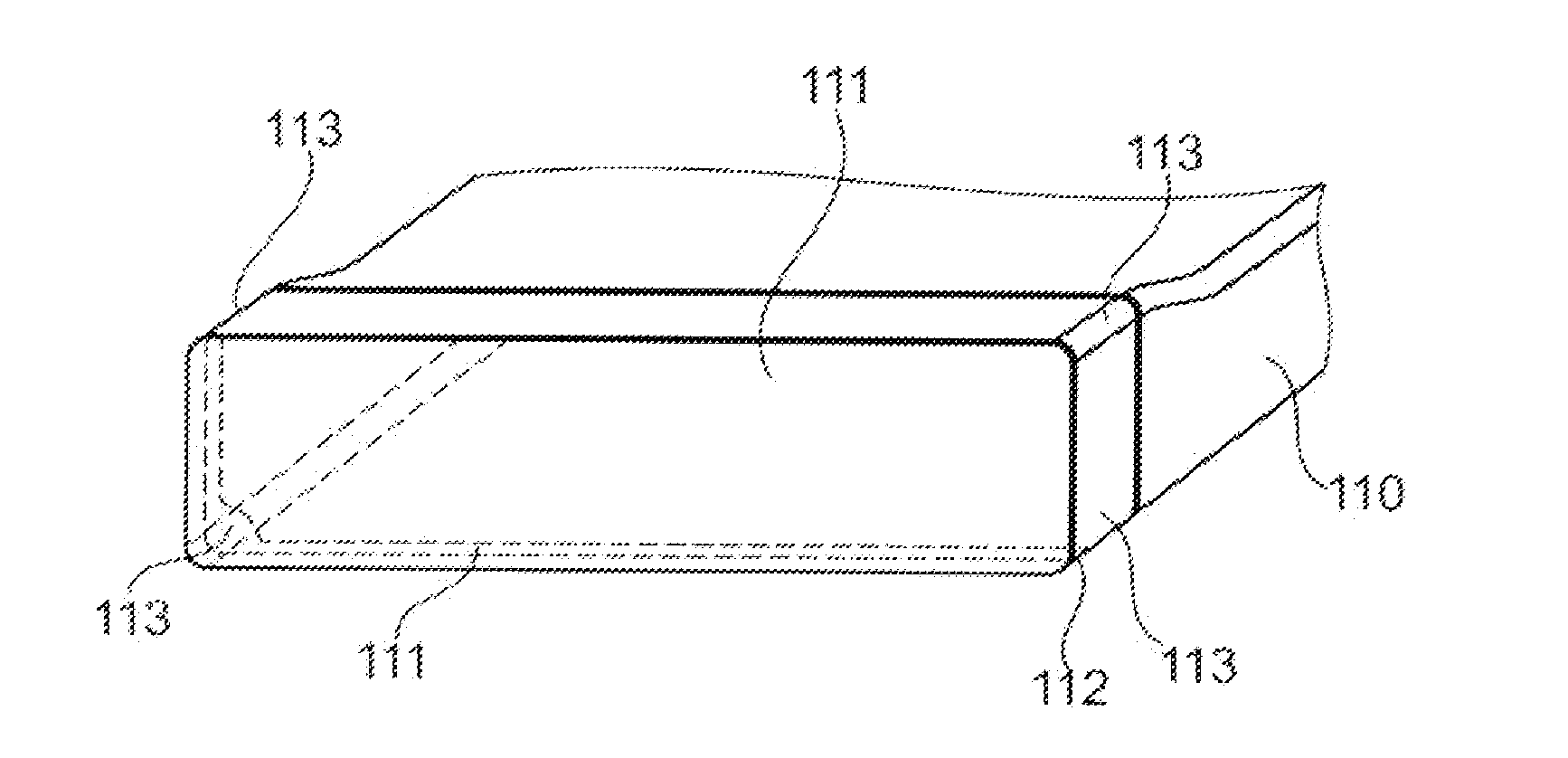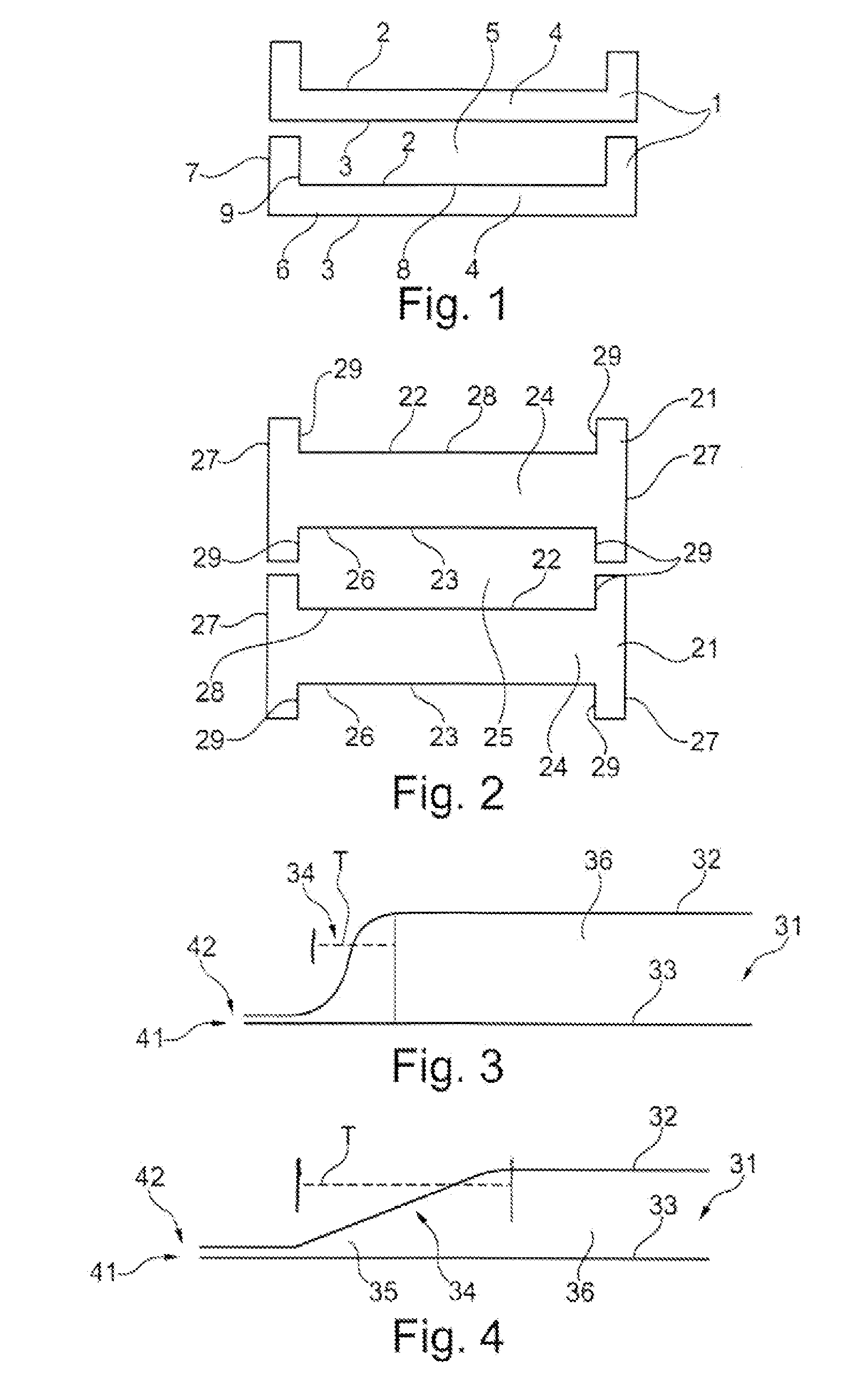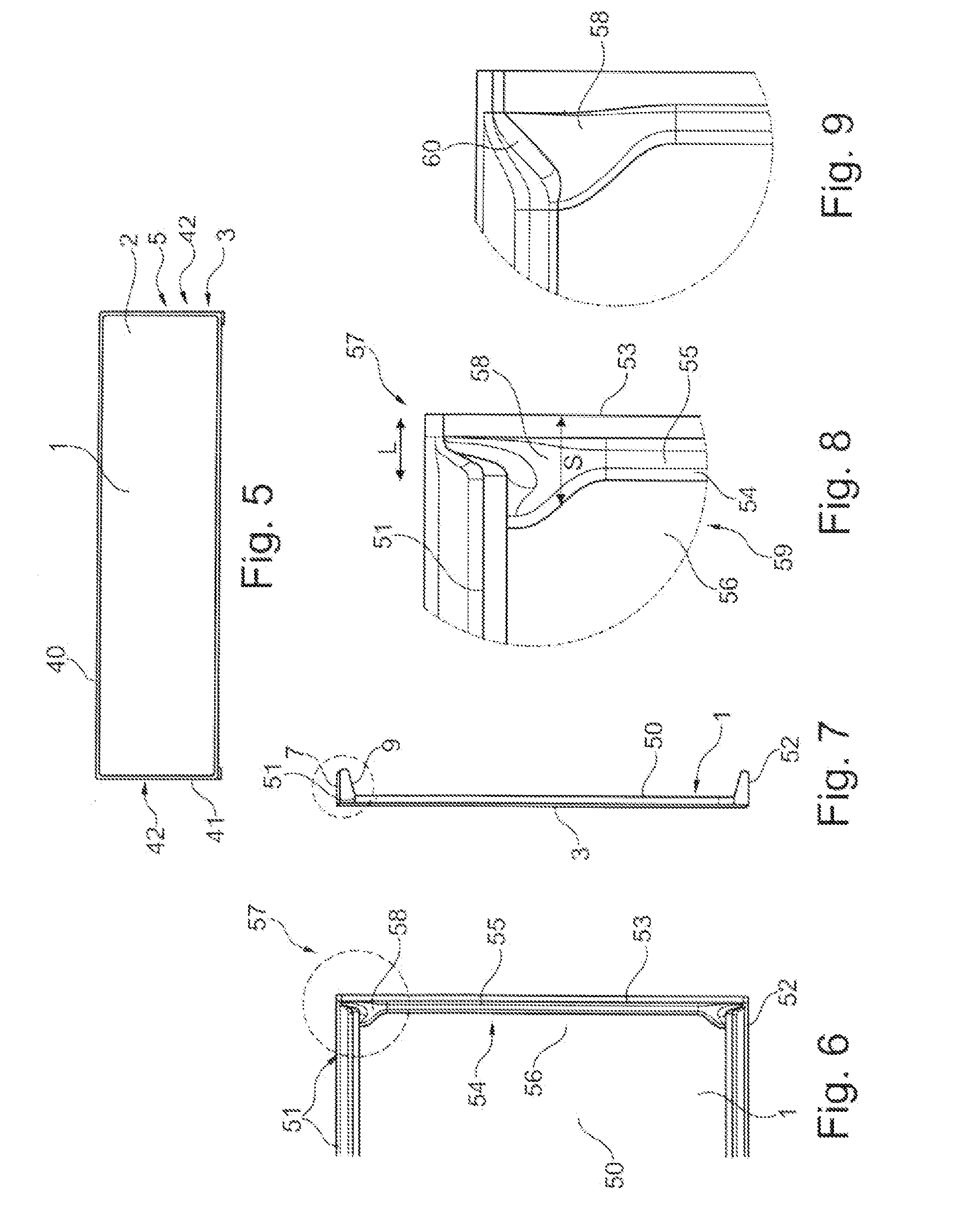Heat exchanger
a heat exchanger and plate technology, applied in the field of heat exchangers, can solve the problems of high stress in the relatively thin-walled plates of the plate stack, and achieve the effects of reducing the risk of boiling, and reducing the stress in the corner region
- Summary
- Abstract
- Description
- Claims
- Application Information
AI Technical Summary
Benefits of technology
Problems solved by technology
Method used
Image
Examples
Embodiment Construction
[0038]FIG. 1 shows a schematic arrangement of two plate pairs 1 which are each formed from a first plate 2 and a second plate 3 and which form a first fluid duct 4 for a first fluid between the plates 2, 3, wherein a second fluid duct 5 for a second fluid is formed between respectively adjacent plate pairs 1. Here, the plates 2, 3 preferably have a substantially planar bottom 6, 8, and side walls 7, 9 which project from said bottom. The respective plates 2, 3 of a plate pair 1 are placed one on top of the other and are connected to one another in fluid-tight fashion, for example by brazing, at their edge in order to form the sealed fluid duct. Either on one of the side walls 7, 9 or on both side walls 7, 9 and / or on the bottom 6, 8, there are provided openings (not illustrated) for the admission of the first fluid into the first fluid duct 4 or for the discharge of said first fluid out of the first fluid duct 4 again. The second fluid ducts 5 are normally designed to be open at thei...
PUM
 Login to view more
Login to view more Abstract
Description
Claims
Application Information
 Login to view more
Login to view more - R&D Engineer
- R&D Manager
- IP Professional
- Industry Leading Data Capabilities
- Powerful AI technology
- Patent DNA Extraction
Browse by: Latest US Patents, China's latest patents, Technical Efficacy Thesaurus, Application Domain, Technology Topic.
© 2024 PatSnap. All rights reserved.Legal|Privacy policy|Modern Slavery Act Transparency Statement|Sitemap



